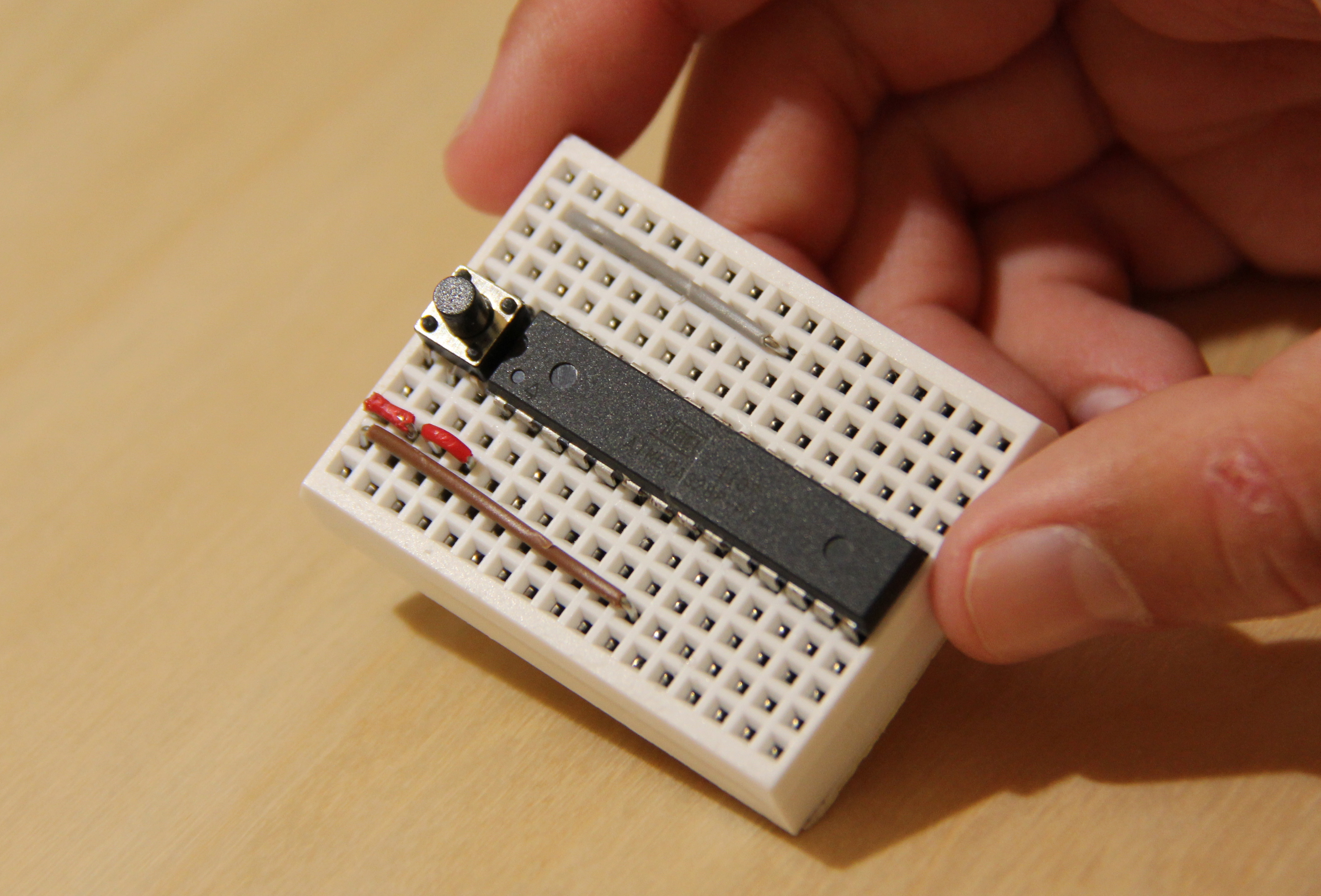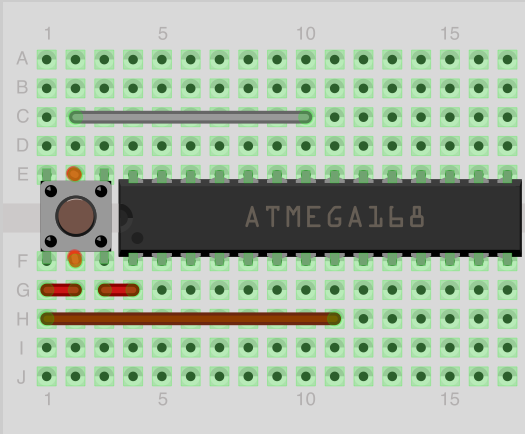Summary of The $9 Quasi-duino (Almost-duino)
This article presents the Quasi-duino, a minimalist and compact Arduino-compatible project designed to operate with minimal components and low power consumption. It uses the ATmega328p microcontroller without the need for a crystal, voltage regulator, USB interface, or reset button, relying on a custom Arduino core and the Narcoleptic library for power efficiency. The project is built on a small breadboard and requires some basic components mainly sourced from Sparkfun. It is ideal for users who want to run their existing Arduino code in a smaller, simpler form factor.
Parts used in the Quasi-duino:
- Mini Breadboard
- Mini Push Button Switch - Tall
- ATmega328p microcontroller
- Jumpers (wires)
- 330 Ohm Resistor
- 16MHz Crystal (for bootloading only)
- 22pf Capacitors (2 pieces)
- LEDs (2 pieces)
- 10uF Capacitor (for disabling auto-reset on Arduino UNO)
- Extra Breadboard (for LEDs, optional)
- Arduino UNO or later (for bootloading)
- LiPo Battery (optional)
- LiPo Charger (optional)
Do you currently have an Arduino and want to make it smaller for cheap? The Quasi-duino is for you (Italian for almost-duino). This makes a functional “almost” Arduino, in a very small form factor using the narcoleptic library for pico-power operations on a pico-space breadboard. This ‘ible will use Arduino 1.0. All of your Arduino code that you have made does not have to be formatted for the Quasi-duino!
I have found multiple places that you can use your Arduino without a crystal, voltage regulator, USB interface, or even without the reset button. These can all make a difference in your project. With the Quasi-duino, I wanted to use the minimum possible components, minimum possible power, but still with the basic Arduino capabilities.
This project will require you to download a new Arduino core for the Quasi-duino that I developed. It is provided later in the instructable.
Step 1: Parts
Tools:
Needle Nose Pliers (Everyone should get a pair of these anyways)
The Quasi-duino core (will explain later)
The Narcoleptic library for Arduino (compatible with Arduino 1.0)
You can get all of the parts you need at Sparkfun:
** Essential Parts for Quasi-duino ($8.75)
Mini Breadboard http://www.sparkfun.com/products/7916 $3.95
Mini Push Button Switch – Tall (Most of you will want the tall button because it is easier to incorporate in your project) http://www.sparkfun.com/products/8605 $0.50
ATmega328p http://www.sparkfun.com/products/9061 COM-09061 $4.30
Some Jumpers
** The following items need to be purchased only once, and can be used to make multiple Quasi-duinos later ($3.10)
Resistor-330 Ohm http://www.sparkfun.com/products/8377 $0.50
16MHz Crystal (needed for bootloading, but not for the completed project) http://www.sparkfun.com/products/536 $0.95
22pf Capacitors (2) http://www.sparkfun.com/products/8571 $0.50
LEDs (2) http://www.sparkfun.com/products/532 $0.70
10uf Capacitor (for disabling the auto-reset on you Arduino UNO) http://www.sparkfun.com/products/523 $0.45
Extra Breadboard (nothin’ special, just a basic one for LEDs)
Arduino UNO or later (Most of you will have one already) ** for users of older Arduinos, please see the bottom
**Optional
LiPo (get these at Sparkfun too, they’re cheap and rechargeable for your small projects!)
LiPo Charger (you’ll need one of these if you’re getting the LiPos)
** Note for users of old Arduinos: You can try an older Arduino in this project, but I have not tested them yet. You still should be able to do this project. I will make notes on the bottom of the pages that (I think) are different for older Arduinos.
Step 2: Assemble Away!
2. Connect a wire coming from GND (pin 8) of the left side to the very top of the breadboard.
3. Connect a wire coming from GND (this time pin 22) of the right side and connect it to the second highest point of the breadboard.
4. Take a piece of wire, enough to fit across the middle of the breadboard, and strip the whole length of it off.
5. Connect that wire across the middle of the breadboard at the second highest point.
6. Connect RST (pin 1) of the ATmega328p to the next pin on the breadboard higher.
7. Connect the top of the breadboard on the left to the next pin down.
8. Insert the button on top of the bare wire, in the middle, above the ATmega328p.
Step 3: Bootloading the ATmega328p
For more details, click: The $9 Quasi-duino (Almost-duino)


